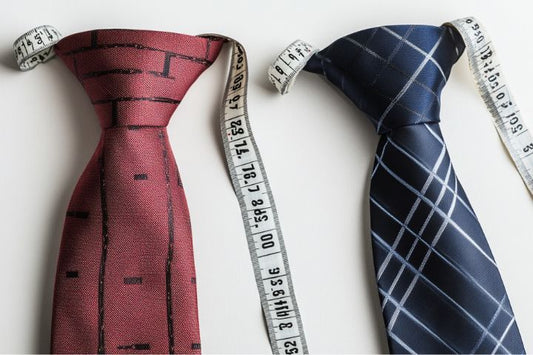Socks leaving indentations on legs is a common experience for many individuals. This phenomenon typically occurs when the elastic bands at the top of the socks are too tight against the skin, leading to temporary marks after the socks are removed. The strength of the elastic grip and the duration the socks are worn can both affect the depth and persistence of these indentations.
The presence of these sock marks on ankles can also signal underlying health conditions. In some cases, they reflect normal skin indentation which disappears swiftly. However, if the indentations are accompanied by persistent swelling, it could suggest issues such as edema, where excess fluid builds up in the tissues.
It's important to differentiate between harmless sock marks that fade quickly and marks that may be symptomatic of conditions like deep venous thrombosis or peripheral edema. Recognising when sock indentations are a mere inconvenience versus a potential health concern is crucial in maintaining overall wellbeing.
Physiology of Skin Indentations
Understanding the physiology of skin indentations involves recognising the role of skin elasticity and how blood circulation and pressure can affect the skin's appearance.

Skin Elasticity and Compression
The skin is inherently elastic due to its collagen and elastin fibres, which allow it to stretch and return to its original shape. However, when socks exert consistent pressure, especially if they are tight-fitting, they compress the skin and the underlying tissues. This compression can lead to temporary indentations as the skin is forced inward, and these are more noticeable when the material of the socks is less flexible, like those made from certain synthetic materials.
Blood Circulation and Pressure Effects
Blood circulation plays a vital role in maintaining skin health and appearance. When socks leave marks on legs, it's often because the pressure applied by the socks affects blood flow. In normal circumstances, the indentations caused by this pressure are short-lived as the circulatory system continues to function effectively. However, if someone has a condition that affects their circulation, or if the socks are particularly restrictive, indentations may be more pronounced or last longer.
Socks Design and Materials
When considering why socks leave indentations on legs, two primary factors come into play: the design of the elastic bands and the properties of the fabric used.
Elastic Bands and Tightness
The elastic bands in the sock's cuff are crucial for keeping the sock in place on the leg. However, if these bands are too tight, they can compress the skin and underlying tissue, causing indentations. Socks that use a high tension in the elastic, often to prevent slipping, can be particularly prone to leaving these marks on the skin.
Fabric Types and Their Properties
The fabric type is also instrumental in how a sock behaves on the leg. Synthetic materials, such as nylon or polyester, tend to be less flexible, potentially leading to more pronounced marks. In comparison, natural fibres like cotton or wool can offer more stretch and breathability, which may reduce the severity of sock indentations. Each fabric has unique attributes:
- Cotton: Breathable, with a softer grip on the skin.
- Wool: Elastic and cushioning, but can be constrictive if woven tightly.
- Synthetic blends: Often more durable, but can be less forgiving on the skin.
Materials are chosen for their specific qualities, whether to enhance comfort, durability, or fit. However, these same attributes can contribute to the degree to which they leave indentations on the wearer's legs.

Effects of Prolonged Wear
Wearing socks for extended periods, especially those with tight elastic bands, can lead to several effects on the legs. The fabric's constant pressure against the skin can have both aesthetic and medical implications.
Potential for Swelling
Socks with tight elastic bands can impede circulation and result in fluid retention in the tissues, a phenomenon often referred to as edema. This condition leads to swelling in the legs, where the impression from the socks may persist. Fluid build-up, if not managed, may increase the risk of more serious circulatory problems.
Impacts on Skin Health
Prolonged pressure on the skin from tight socks can also cause skin issues such as irritation, discolouration, and even the breakdown of skin tissue over time. Especially in individuals with sensitive skin or other underlying health conditions, this can lead to skin damage or infections if the skin's integrity is compromised and proper hygiene isn't maintained.
Preventative Measures
To prevent indentations on the legs from socks, one must consider both the fit of the socks and alternative options that reduce constriction.
Correct Sizing and Fit
Choosing socks that fit correctly is crucial. Socks should be snug without being tight, ensuring they do not constrict circulation. Individuals should measure their feet and refer to manufacturers' sizing guides to find the appropriate fit. For those with conditions such as oedema or diabetes, where leg swelling is common, it's advisable to seek socks with a non-binding top that won't dig into the skin.
Alternatives to Traditional Socks
For some, traditional elasticated socks may simply not be suitable. Options include non-elastic socks, which are designed to reduce the likelihood of indentations by providing a looser fit around the leg. Another choice is compression socks that are medically designed to promote circulation without leaving harsh indentations, as they distribute pressure evenly. It's important to consult with a healthcare professional before using compression garments to ensure they're right for one's specific needs.
Solutions and Treatments
To address the issue of sock indentations on the legs, specific measures can be adopted that not only alleviate the marks but also promote better skin health.
Moisturising and Skin Care
Proper hydration of the skin is essential. Applying a moisturiser daily can increase skin elasticity and reduce the risk of indentation from tight socks. Individuals should look for moisturisers enriched with ingredients like glycerine or hyaluronic acid, which are known for their hydrating properties. It's recommended to moisturise the legs after bathing when the skin is still slightly damp to lock in the moisture.





